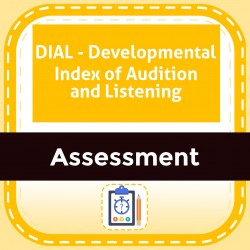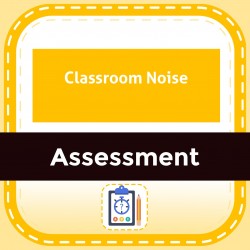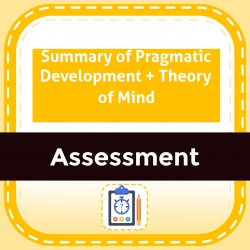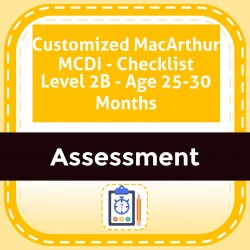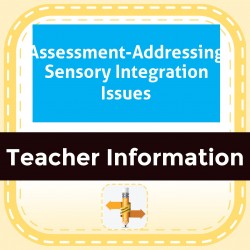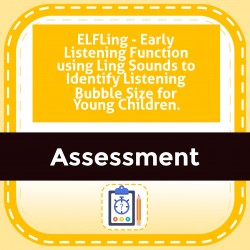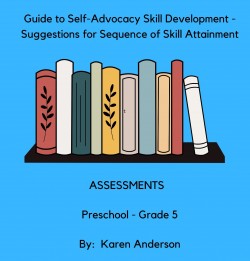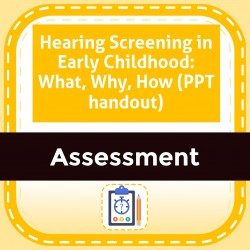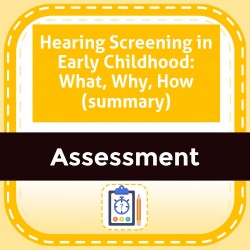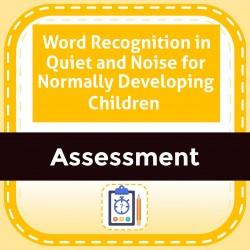Ability Levels
Categories
Resource Types
Age/Grade Range
CCSS
Anchor Standard
Speaking & Listening
Language
Reading
DIAL - Developmental Index of Audition and Listening
$ 0
Chart listing listening behaviors at specific ages ranging from 0-28 days through 22 years.
Classroom Noise Audio File
$ 0
This 10-minute audio file is a recording of classroom noise. It can be used as a part of assessment when testing listening ability for speech in noise. It can be used as a training tool for students w
...
orking to improve their speech-in-noise comprehension. It can be used as background noise while demonstrating the impact of hearing loss during inservice presentations to educators, school staff or parents. It is recommended that the professional with hearing loss upload the classroom noise file to their smart phone and other media devices to have it whenever a quick demonstration or listening challenge is needed.© SSCHL OWNED
Summary of Pragmatic Development + Theory of Mind
$ 0
This chart provides age ranges for theory of mind development and social interaction behaviors of the typically developing child. Children with hearing loss are often significantly delayed in pragmati
...
c language and/or Theory of Mind and their development should be monitored closely.NOTE: This is for Teacher Tools Members ONLY
Customized MacArthur MCDI - Checklist Level 2B - Age 25-30 Months
$ 0
MacArthur Communicative Development Inventories (MCDI) Vocabulary Checklist Level 2B. For ages 25-30 months. Receptive and Expressive vocabulary. Customized for responses that are verbal, in sign, and
...
cued.
Assessment-Addressing Sensory Integration Issues
$ 2
More information on the definition of hyper and hypo sensitivity. You will be able to identify and describe sensory seeking behaviors in students. See BUNDLE at S0XASM774.
ELFLing - Early Listening Function using Ling Sounds to Identify Listening Bubble Size for Young Children.
$ 0
Procedure to present Ling sounds at different distances in quiet/noise, near/far. Functional listening assessment to identify listening bubble for Ling speECH- sounds. Child response to Ling sounds -
...
pointing to images/toys, repeating sound, identifying images representing Ling sounds.
Guide to Self-Advocacy Skill Development - Suggestions for Sequence of Skill Attainment
$ 0
Age-anchored list of expected self-advocacy skills by grade. Starts with preschool with full attainment of self-advocacy skills by the end of grade 4.
Hearing Screening in Early Childhood: What, Why, How (PPT handout)
$ 0
PowerPoint handout of presentation of information for hearing screening within Part C and preschool populations. Includes legal foundations and OSEP recommendations.
Hearing Screening in Early Childhood: What, Why, How (summary)
$ 0
Summary of information for hearing screening within Part C and preschool populations.
Word Recognition in Quiet and Noise for Normally Developing Children
$ 0
Research results identifying the typical word recognition results for children with normal hearing ages 3-17 years. Results for single-word stimuli in quiet at 50dB and 35 dB, and in noise at 50 dB an
...
d 35 dB. Typical scores are 90%+ in noise and 95%+ in quiet.
 Your browser is out of date. For best experience switch to latest updated Browser.
Your browser is out of date. For best experience switch to latest updated Browser.
 Get Chrome
Get Chrome Get Edge
Get Edge Get Firefox
Get Firefox